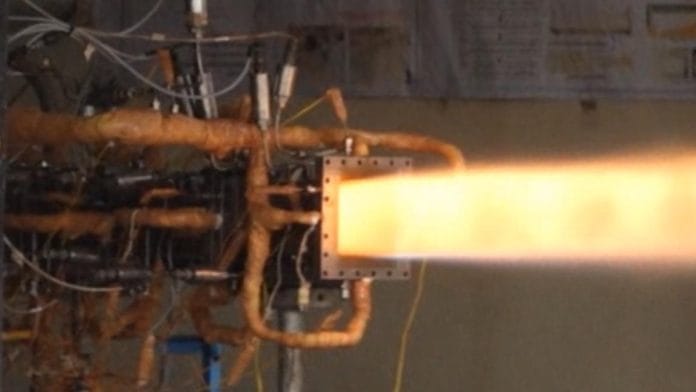New Delhi: A major fillip to India’s pursuit of true-blue hypersonic missiles, the Defence Research and Development Organisation (DRDO) has successfully carried out a cutting-edge Active Cooled Scramjet Combustor ground test for 120 seconds for the first time.
The indigenous development of endothermic scramjet fuel, a first in India, jointly by DRDO and the ‘Industry’ is central to this breakthrough, the defence ministry said in a statement. The fuel offers dual benefits of significant cooling improvement and ease of ignition.
India has also developed a new advanced ceramic Thermal Barrier Coating (TBC) having high thermal resistance and capable of operating beyond melting point of steel.
This will eventually pave the way for India having hypersonic cruise missiles that can travel at speeds greater than Mach 5, which moves at five times the speed of sound or more than 5,400 km/hr.
These advanced weapons have the potential to bypass existing Air Defence Systems and deliver rapid and high-impact strikes.
Several nations including the USA, Russia, India and China are actively pursuing hypersonic technology.
With the new technology, India would be able to have a longer range of hypersonic missiles than those currently deployed in the world.
While India has tested hypersonic gliders, this is the first time that an active scramjet combustor has been tested for such a long duration.
“The hypersonic glider is powered by a rocket motor and glides to a particular point at hypersonic speed,” former DRDO chief V K Saraswat told ThePrint, explaining the difference between what India currently has and will now have.
He said that India lacked the ability to have a hypersonic cruise missile and the latest test is a huge success for the country.
He said that each scramjet engine has a passive and active cooling facility. “This test is of an Active Cooled Scramjet Combustor which allows it to have hypersonic speed for much longer duration than a passive one.”
The key to hypersonic vehicles is Scramjets, which are air breathing engines capable of sustaining combustion at supersonic speeds without using any moving parts.
The ground test of the scramjet combustor showcased several notable achievements, demonstrating its potential for operational use in hypersonic vehicles, like successful ignition and stable combustion, the defence ministry said.
It added that ignition in a scramjet engine is like “keeping a candle lit in a hurricane”.
“Scramjet combustor incorporates an innovative flame stabilisation technique that holds continuous flame inside the combustor with air speed in excess of 1.5 km/s. Many novel and promising ignition & flame holding techniques were studied through many ground tests in arriving at Scramjet Engine configuration. Advanced Computational Fluid Dynamics (CFD) simulation tools were used for their evaluation & performance prediction,” the ministry said in its statement.
Talking about the Thermal Barrier Coating (TBC), it said that the coating is applied inside the scramjet engine using special deposition methods that enhance their performance and longevity.
With demonstrated capabilities in stable combustion, enhanced performance and advanced thermal management, this breakthrough sets the stage for next generation hypersonic missions, the ministry added.
(Edited by Gitanjali Das)
Also Read: Pralay, India’s first tactical quasi-ballistic missile, to debut at Republic Day parade







Machine is business